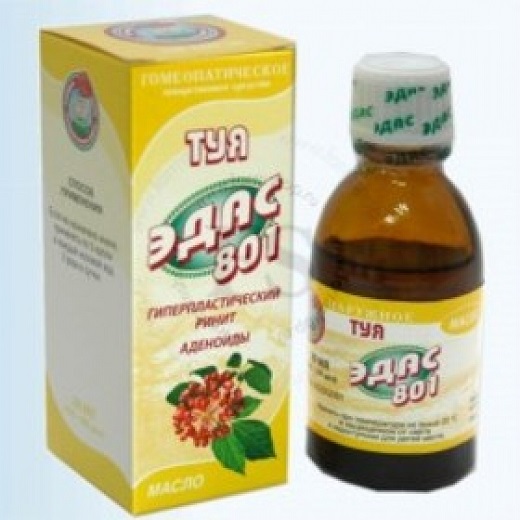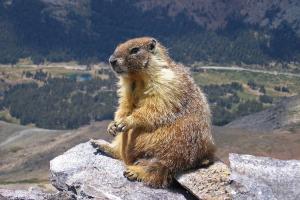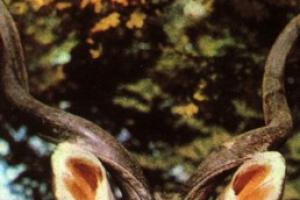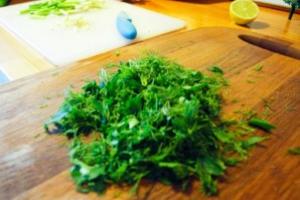Thuja is evergreen from the cypress family, which can develop over fifty or even a hundred years. Almost all types of thuja are winter-hardy. Many varieties surprise with their color palette, for example, you can find thujas as blue color, and yellowish tint. Some are bushes, while others soar three meters into the air. There are even those that grow close to the ground, in the form of small lush balls, they are called dwarf trees. All types are similar to each other, and at the same time unique. Instructions for growing cotoneaster here:
Thuja, description and characteristics
Thuja feels comfortable both in damp space and in dry soil. The structure of the branches and needles of the tree resembles a thick cobweb. The juicy needles are directed vertically upward, some of the “paws” are a scaly structure.
It is worth noting the fact that the health of the tree can be judged by the condition of the “jewelry” needles. If the needles are juicy, full of moisture and match the color of the tree crown, then the plant is healthy, but if, when touched, the branches are dry and have an unusual yellowish, and sometimes brownish tint, then most likely the plant lacks moisture or minerals.
Thuja is a plant that must be protected from the wind. For the first few years, young trees require shelter for the winter.
When growing thuja at home, it is necessary to attach special importance to the container in which the thuja grows. With each new transplant, the pot should increase one and a half times.
Thuja has many useful properties. For example, from the cones of some varieties you can make decoctions that relieve headaches. Tree needles can also be brewed; teas of this kind can have an impact on a person’s psychological state. Thus, tea made from thuja needles has a calming effect.
Types and varieties of thuja with photos
On the market today garden plants The following varieties of garden cultivated thuja are presented in Russia:
- Varieties of folded thuja:


- Western thuja varieties:
- thuja occidentalis golden globe
- Thuja occidentalis columna
- thuja occidentalis teddy
- Thuja occidentalis globeosa
- Thuja occidentalis holmstrup
- thuja occidentalis yellow ribbon
- Thuja occidentalis golden taffet
- Thuja occidentalis aureospicata
- Thuja occidentalis Miki

The cute ball in the flower garden is Thuja occidentalis golden globe





Light colors in the column - thuja occidentalis yellow ribbon


Almost like a Christmas tree - Thuja occidentalis aureospicata

- “geometric” varieties of thuja:

- and others:
- thuja orientalis aurea nana
- thuja heather
- Thuja Sunkist
- Thuja Reingold
- thuja woodwardy
- golden thuja
- thuja hoseri
- Thuja Wagner
- Thuja spiralis
- dwarf thuja
- thuja teeny tim
- Thuja filiformis
- thuja blue
- thuja little giant
- Thuja fastigiata
- thuja cancan
- thuja europa gold
- Thuja Miriam
- thuja little champion
- thuja little jam
- thuja edas 801 — excellent remedy for adenoids

Unusual shape - Thuja orientalis aurea nana


Bright fresh in the garden - thuja sunkist


Another spherical thuja - Thuja woodwardi






A worthy inhabitant of the alpine hill - Thuja Teeny Tim

Thuja filiformis - green cascade on the lawn









Medicine is made from thuja oil - Thuja Edas 801
- Western.
- Japanese.
- Chinese.
- Korean.
- Folded (giant).
- Thuja occidentalis Sunkist.
- Dwarf thuja Teddy.
- Thuja West Brabant.
Even the most experienced gardener will be able to choose exactly the variety that will delight him for many years. Read more and what types there are.
Photo of thuja in landscape design
Thanks to the chic variety of species and varieties, thuja will fit perfectly into the design of any space.

For example, landscape designers use thuja as a hedge, use it to frame compositions, to add liveliness stone garden, as well as for creating alpine slides.

The variations of design solutions using thuja are so diverse that it would be difficult to describe even half of them.

Price of thuja seedlings and seeds
Thuja is an integral resident of garden plots. Its diversity is so great that you can choose a specimen that is ideal for any composition, from a garden near a private house to flowerbed areas near the administration. The cost of seedlings, cuttings and seeds varies depending on the variety and stage of development. An adult grown plant will cost several times more than a young seedling. If we talk about the general price category for seeds, then this ranges from 150 to 700 rubles. When it comes to seedlings and cuttings, the cost of one copy can reach 25 thousand rubles.
Where to buy thuja?
The thuja plant (Thuja or Tuya) is also called the “tree of life.” It belongs to the order of gymnosperms of coniferous plants of the juniper family. It is not known for certain where it was brought to our continent from. It is believed that it was first introduced from America or East Asia. This genus of plants combines six species. Thuja is a long-liver: her average age can be about 150 years old, however, there are trees older.
Description of thuja
The description of the thuja tree comes down to a description of its features. This plant is evergreen tree or shrub. In its natural environment, the circumference of its trunk can be about 6 meters and its height 70 meters. However, specimens growing in our latitudes barely reach a height of 11 meters. Young trees have soft, pale green needles, while older trees are dark green, opposite and scaly. These monoecious plants bear fruits in the form of small oblong or oval shaped cones with flat seeds.
It is noteworthy that the seeds begin to ripen in the first year. In addition, thuja is easy to care for, cold-resistant, and western thuja can withstand severe frosts.
Tree planting and its features
The first step is to choose the right area in which the tree will grow. It should be remembered that the thuja plant is light-loving, although all day it is contraindicated for him to be in the sun: It suffers from dehydration and will have a harder time surviving the winter. Therefore, when choosing a place for planting, you should pay attention to the fact that it is well lit, but on a hot afternoon the sun should not mercilessly scorch the plant. The tree also does not like drafts.
The soil for this plant should be rich in various nutrients. The most suitable is turf soil with the addition of peat and sand. Nevertheless, it is able to survive even in rather poor soil (sandy loam, clay and marshy soils).
It is best to plant thuja in open ground in the off-season (autumn or spring). However, do not forget that a tree planted in the fall may not have time to grow stronger and will not survive the winter well.
Thuja tolerates pruning quite well. If you carry out this procedure often enough, while heavily pruning the branches, the tree will subsequently become very lush, with thick needles. It is best to prune in the spring before the buds begin to open. If the thuja is planted as a green hedge, then it will have to be trimmed regularly in any case. Even if it grows as a single plant, it also needs thinning and sanitary pruning.
If the plants are planted in a group, then they will need formative pruning, otherwise over time they will have an unsightly appearance. It must be remembered that crown molding should be done when the tree reaches the desired height.
There are also species that require frequent formative pruning. However, to prevent the tree from weakening, you should not cut off more than one-third of the stem in one procedure. The first time pruning is carried out when the tree reaches 2-3 years. For this purpose, use a very sharp pruner so that it does not chew the stems of the plant.
Sometimes it happens that an adult tree needs replanting. This is a simple procedure, but to carry it out you should learn a few rules. If the tree is small, then you need to poke the soil around its axis using a sharp shovel. It is necessary to maintain a distance from the trunk of about half a meter. After this, you need to carefully pry up the tree and pull its roots out of the ground along with the trunk circle, put it in a wheelbarrow and transport it to the transplant site, being careful not to destroy the lump of earth.
Immediately after this, the plants are planted in the ground. If it is quite large, then it will have to be pierced a year before transplantation. This is done so that the thuja can grow young roots inside an earthen clod separated by a circle. As a result, the soil will not crumble during transportation to a new planting site and the transplant will be completed as painlessly as possible. Such a tree will take root better after replanting.
Young specimens less than 5 years old must be covered with spruce branches on top. But before that, it should be highly hilled, and trunk circle cover with a large layer of mulch (peat). Adult plants do not need shelter before wintering, but nevertheless, the tree trunk circle still needs to be sprinkled with mulch.
If the winter is snowy, this can lead to injury to branches even in mature and strong plants. To prevent such a situation, in the fall the crown is tied to the trunk using twine.
By the end of winter, a non-woven covering material is put on the tree, which can protect it from bright sun rays in the spring. Due to the sudden change temperature regime, cracks may form on the tree bark. In the spring, they should be covered with garden varnish, tightening the bark well for better healing of the wounds.
Exists a large number of varieties of this wonderful plant. Among other things, they are divided into basic and derivative types. There are 5 types of thuja that grow under natural conditions:
How and where cashews grow, what the tree and fruits look like
Each of these types should be considered in more detail.
 Thuja occidentalis is the most popular type of plant among amateur gardeners. It is easy to care for and frost-resistant. A large number of varieties of this species are known. This is a long-lived plant, some of its specimens live more than 1000 years. This thuja takes root in many regions of Russia, except for semi-deserts in the south and harsh northern regions. It is bred in all European countries. There are such varieties of this plant:
Thuja occidentalis is the most popular type of plant among amateur gardeners. It is easy to care for and frost-resistant. A large number of varieties of this species are known. This is a long-lived plant, some of its specimens live more than 1000 years. This thuja takes root in many regions of Russia, except for semi-deserts in the south and harsh northern regions. It is bred in all European countries. There are such varieties of this plant:
Thuja japonica, also known as Standish thuja, grows in the mixed forests of the highlands on the Japanese island of Hondo. It grows at an altitude of 1000−1800 m above sea level. It is distinguished by soft and beautiful needles, which have green tint above and white spots below. It can reach a height of about 18 meters.
Thuja Koreana is a thuja shrub that is rarely found in the forests of Korea. It is characterized by a wide crown with soft needles and spreading branches. In the Russian climate, it can grow only in the south, since it does not tolerate frost.
Thuja foldata does not tolerate cold quite well. During severe frosts, young shoots freeze, but as soon as spring comes, they are able to quickly regenerate. Its length can reach 60 meters and width - 2 meters. It grows on the west coast of Canada and has a specific aroma.
Thuja orientalis, or oriental flat branch, whose homeland is considered to be China, has been popular since ancient times due to its healing properties. It is able to kill many pathogenic bacteria, refreshing the air with its aroma. Its branches are shaped like a fan.
This species does not tolerate low temperatures, which is why it is grown only in the southern regions. IN middle lane Russia can only grow if there is good shading.
Undoubtedly, thuja is very beautiful exotic plant, which has taken root well in many regions. With its help, you can decorate almost any landscape, because its decorative qualities cannot leave connoisseurs of natural beauty indifferent. For many decades now, this plant has pleased many owners of suburban areas with its appearance, because its popularity is growing every year.
Thuja plant and its types

























Tall green thuja trees with flat branches located in different planes form continuous screens, limiting and shaping the space, forming closed landscape areas. The play of shades of color in folds and shading created by multidirectional branches makes the textured surface expressive, creating a stunning impression. Unpretentious plants They tolerate pruning well and are great for creating dense hedges and all kinds of green shapes, designing rocky hills and driveways.
Types of thuja
Several types of thuja are grown in culture, on the basis of which breeders have developed many different varieties, which include columnar, pyramidal, spherical and cushion-shaped forms of different colors and shades. The greatest selection diversity is distinguished by the western, eastern and folded thujas.
After you choose a variety of thuja suitable for your garden, use our article “”, which will help you: choose the right seedling, plant and grow a beautiful tree or shrub from it.
Western thuja (Thuja occidentalis)
Large trees up to 20 m high naturally grow in the forests of North America. The crown is formed in the form of a pyramid narrowed at the top and becomes rounded with age. The reddish-brown bark cracks and peels off, hanging in long strips. The needles are green, flat, light on the underside. Small cones, 1–1.5 cm long, ripen in the fall and quickly fall off.
Danica

Delightful dwarf variety Danish selection obtained in 1948. Mature plant reaches a height of half a meter and develops slowly. The dense crown forms a perfectly rounded ball of deep green color. What gives this thuja a special charm is its wavy surface formed by fan-shaped branches placed in vertical plane. The needles are bright in summer and tend to turn brown in winter. The tree is compact and great for planting in mixed borders and for landscaping rock gardens.
Fastigiata

The well-known variety of German selection is a slender, dense tree more than 15 m in height. Development is rapid, annual growth reaches 20–30 cm. The columnar crown, widened at the bottom and narrowed at the top, is formed by strong skeletal branches directed vertically.
The side branches are flat, horizontally placed, curled at the ends and covered with dark green needles. It propagates well by seeds, but the resulting seedlings may differ greatly from the mother plant.
Thuja orientalis
The name Thuja orientalis is assigned to a species that actually does not belong to the genus Thuja, although it is very similar in appearance. It would be more correct to call this decorative conifer Platycladus orientalis or Biota orientalis. The species originates from Korea and China, where it grows singly or in small groups on rocky, poor soils in a temperate climate.
It develops slowly, mainly in the form of a tree, reaching 5–10 m in height, growing even higher in favorable conditions. In cold regions it takes the form of a shrub. The crown is pyramidal or cone-shaped with wide base. The bark is reddish-brown, peeling off in strips.
The flat, fan-shaped branches are directed vertically and covered with bright green scaly needles. Young plants, likewise, may be distinguished by needle-like, sharp needles. In winter, the needles radically change color - they turn brown or yellow.
Aurea Nana

The dwarf variety is popular in regions with temperate or warm climates; in cold winters it requires shelter. Despite some whimsicality, the plant is loved for the bright light green “grassy” color of its needles, its cone-shaped crown, which becomes ovoid over the years, and its slow development. By the age of ten it reaches 0.8–1 m in height; an adult tree grows up to one and a half meters and is darker in color.
In winter, the color changes, the needles acquire a golden-bronze hue. The plant is capable of displaying rich colors only in sunny areas and moist soils; in this case, Aurea Nana will serve as a real decoration for a flower garden, rock garden or mixborder.
Justynka

A spectacular dwarf, columnar-shaped variety of Polish selection. By the age of ten, the tree grows to 1–1.2 m. Formative branches are directed upward, the branches are fan-shaped, located in a vertical plane, the crown is dense, with dark green flattened needles. It is noted as a cold-resistant plant; it winters well in temperate latitudes. Looks great in rockeries and small mixborders.
Morgan

The unusual thuja was obtained by Australian breeders and is distinguished by a dense pyramidal crown of fan-shaped branches of golden yellow color. In winter, the tree becomes even more attractive, acquiring a bright reddish-bronze color, sometimes with an orange tint. It develops slowly, growing 5–7 cm per year, reaching a height of 70 cm by the age of ten.
Thuja plicata
Huge trees of this species in the natural conditions of the Pacific coast of North America grow up to 60 m, due to which the species received another name - giant thuja (T.gigantea). At the latitude of St. Petersburg, the tree reaches 12–15 m, but is prone to freezing in harsh winters. The crown is low, thick, spreading, the branches are directed horizontally or obliquely upward, the side branches are drooping. The needles are scaly, long, emerald green, with a whitish stripe on the underside.
About 50 varieties have been bred; due to their large size, the species is often planted in parks; for garden plots, it is recommended to choose dwarf and slow-growing varieties.
Whipcord

A wonderful dwarf variety of American selection grows as a tree with a spherical crown, reaching 1.5 m. The shoots are large, sloping, long sharp needles flow down, giving the thuja an exotic look. In the cold season, the color becomes bronze.
It grows slowly, no more than 7–10 cm per year, requires an open area and sufficient moisture, and is frost-resistant. Vipcord looks exceptional in single plantings against a background of stones, and is effective in standard form.
Zebrina

A slow-growing variegated variety with a wide-conical crown, loose in young plants and dense in adults. On poor soils and in northern regions it grows 7–10 cm per year, reaching 2.5 m in height and 1.5 m in diameter by the age of ten. In favorable conditions, on nutritious soils, it produces annual growth of up to 15–20 cm.
The skeletal branches are spreading, the side branches are drooping, covered with shiny scale-like needles of a juicy green tone, young shoots with creamy white or golden transverse wide stripes. A lush, elegant tree is most suitable for solitaire planting.

Originally grows in central Japan, on the islands of Honshu and Shikoku. In Japanese culture, the species is considered one of the five sacred trees of Kiso, and in ancient times this thuja was prohibited from being cut down. Large beautiful tree with vertically directed spreading branches forming a pyramidal crown with a wide base, reaches a height of 20 m. In cultivation it grows up to 6–9 m, but under natural conditions old trees can grow huge - up to 35 meters or more.
The bark is fibrous, reddish-brown in color. The needles have a characteristic strong odor, flat, matte, bright green, the reverse side is bluish-silver. Japanese thuja is frost-resistant, but suffers from a lack of moisture; it develops better on nutritious, well-drained loams. Open areas or sparse partial shade are preferred.
Korean thuja (Thuja koraiensis)
A spreading shrub or conical tree with a loose crown, growing up to 7–8 m in height. It grows wild in forests, on the mountain slopes and valleys of China and Korea, where it is considered a fairly winter-hardy plant. The bark is reddish-brown, rough, the shoots are flat, with narrow blunt needles, silvery on the underside. The look is graceful and light thanks to light tone lacy branches with edges curved upward.
Species plants are available for purchase in nurseries; a few varietal varieties are rare.
Glauca Prostrata

A promising slow-growing variety with a mature plant height of up to 60 cm. The plant is showy, with graceful openwork branches similar to fern leaves, bluish-green in color with a silver lining. The light, lush crown with spreading shoots looks airy.
It grows poorly in deep shade, losing its decorative effect. An exceptional choice for mixed foreground plantings, looks great as a tapeworm against a background of dark plants.
Groups of thuja varieties according to growth rate, crown shape and color
The entire variety of thuja varieties can be divided into categories according to growth intensity and crown shape. Another important feature is the color of the needles. The most common among thujas are variations of various shades of green, golden-yellow plants are spectacular, blue-hued varieties are less common, most often these are a few representatives of the oriental thuja.
Pyramidal (cone-shaped)
Platycladus Pyramidalis Aurea

Beautiful variety thuja orientalis with a narrowed cone-shaped crown of juicy green color. It grows up to 4–6 m in height, the crown is formed by vertically directed branches, the apex is pointed. The overgrowing branches are small, densely covered with scaly needles of a yellowish-green color, which do not fade in winter.
The variety is characterized by moderate growth - up to 10 cm per year. An excellent choice for adding color to mixed conifer plantings or forming a colorful, slender hedge.
Kornik

A strong, lush tree with a pyramidal crown, growing densely from the ground itself, is a famous representative arborvitae. The crown is formed by elastic branches located horizontally and drooping. The needles are glossy, dark green, with reverse side covered with silvery stripes, becoming golden or bronze in winter.
The growth rate is average, by the age of ten the tree reaches 2.5–3 m in height and up to 1.5 m in diameter. To form a continuous hedge or screen, seedlings are placed every 0.8–1 m. Cornik looks great as a tapeworm.
Globular
Golden Globe

The round golden thuja was obtained by Dutch breeders in 1963 and is a mutation of the Woodwardii variety. The crown is assembled from flat small branches directed horizontally. It grows moderately, 7–8 cm per year, the diameter of an adult spherical shrub is 1–1.2 m. The needles are very light, shining golden-yellow in color, and after frosts they become reddish-copper.
For full coloring you need an open space. The variety works well in single plantings in flower beds and mixborders, and is excellent in original design tracks.
Hoseri

A slow-growing shrub is a variety western thuja Polish selection, grows 4–8 cm per year. The crown is rounded, even, formed by skeletal branches directed obliquely upward with small overgrowing branches and bristling young shoots, which is why the surface looks soft and velvety. The needles are small, smooth, emerald green, clear in color, turning bronze in winter.
The regular spherical crown reaches half a meter in diameter by ten years. In adulthood, the plant becomes flattened, acquiring a cushion shape, and can reach a diameter of more than a meter.
Columnar
Columna

One of the best columnar varieties, obtained in Germany at the beginning of the 20th century. A tall, slender tree is characterized by an average growth rate; by the age of ten it reaches 3 m in height and 1.2–1.5 m in diameter; later it can grow up to 10 m, which is a unique characteristic of columnar-shaped thujas, which usually do not reach such sizes .
The narrow crown with a blunt rounded top is formed by horizontally directed branches, fan-shaped at the ends. Small glossy needles are smooth, dark green in color. The variety is frost-resistant, unpretentious, suitable for forming green screens that do not require cutting.
Brabant

Fast growing western thuja with a columnar or narrow cone-shaped crown. It grows actively, in favorable conditions it gives annual increments of up to 30 cm, reaching a height of 3.5–5 m. The growing branches are flat, multi-directional in the shape of a fan. The scaly needles are of a thick green tone, the color is stable and does not change with the arrival of cold weather. The crown surface is wavy and acquires a loose structure over the years. Used for group plantings and evergreen alleys.
Dwarf
Waterfield

Western thuja The dwarf type is a rounded shrub with a dense crown; with age it acquires a slightly elongated oval shape. By the age of ten it reaches a height of about 30–50 cm, growing 4–5 cm per year.
Shortened lateral branches are fan-shaped, delicate growths, light cream when emerging, make the surface textured, soft, similar to lichen. In winter, the needles become brownish-brown.
Zmatlik

Nice Czech variety western thuja dwarf type with vertically directed growth. The crown is columnar-shaped, narrow, up to 1.0–1.2 m high and up to half a meter wide. Seedlings and young plants have an indefinite, curved shape, and the plant itself seems disheveled.
Over time, due to the fan-shaped twisting branches, the dense surface acquires a patterned texture due to spirals and waves overlapping each other. The needles are small, dark green. It tolerates planting in the shade, but in this case the crown becomes loose, losing its amazing decorative effect.
Cushion-shaped
Umbraculifera

Cushion-shaped western thuja obtained at the end of the 19th century by German breeders. It develops slowly, up to 7–10 cm per year, by the age of ten it grows about 1 m tall, forms a pressed wide crown with a diameter of more than 2 m, umbrella-shaped, rounded at the edge.
The branches are flexible, with densely growing side branches, curved and placed in different planes, which gives the surface a peculiar effect of water ripples. The growths are flat, covered with dark glossy needles with a bluish tint.
Golden Tuffet

Spectacular variety western thuja at a young age it is round in shape, later the crown becomes wide, cushion-shaped, reaching a height of 60 cm. The overgrowing branches are graceful, drooping, and located in different directions. On young growths, the needles have a delicate pinkish-golden tone; in bright sun they acquire an orange or bronze hue. A plant planted in the shade loses its warm tones, turns green, and the crown becomes sparse.
Golden (yellow)
Forever Goldy

Promising “ever-yellow” variety arborvitae with bright golden-green needles that do not change color throughout the year. The compact tree with a cone-shaped crown is formed by strong small branches with flat shoots, turned vertically and located parallel to each other. Growth is up to 10–15 cm per year; by the age of ten, the tree grows no more than one and a half meters in height.
Young shoots are much lighter than the deep green tones, and this play of light and shadow makes the plant especially attractive. Grows well in sun and partial shade, but open areas the golden color becomes more saturated. Used as a tapeworm on rocky hills, as well as for low bright hedges.
Golden Minaret

Beautiful light-loving variety thuja orientalis is a lush pyramidal tree with needles of a golden-bronze hue; in winter, reddish-bronze tones predominate. When planted in shade, it turns lemon green. It grows up to 4 m in height and about 1.5 m in diameter, the growth rate is moderate - about 10 cm per year.
The needles are scaly, densely covering short branches, the growths puff up and create the illusion of a soft, plush surface. Needs shelter for the winter, especially at a young age; in the spring, shoots are susceptible to burns.
Blue
Blue Cone

This oriental thuja with a dense cone-shaped crown in the shape of a pin, it develops intensively, in good conditions it grows about 20 cm per year and reaches a height of 2–3 m and a width of 1.2–2.0 m. Flat branches in the form of a fan are directed vertically, the needles are bluish-green, dark, sea green.
Blue Con is undemanding to watering and works well in hot regions, surpassing the western thuja in drought resistance. In northern latitudes, during harsh winters with little snow, it can freeze out and requires reliable shelter.
Meldensis

Variety eastern thuja with an ovoid crown in young plants, which becomes pyramidal in adults. The branching is dense, the branches are fan-shaped, the shoots are multidirectional, forming a dense flat surface. The needles are bluish-green, darken in winter, acquiring a purple tint, and young growths turn brown. Plants grown from seeds are more resilient and grow faster.
Fast growing
Gelderland

A beautiful slender plant with a perfect cone-shaped crown, forming from the ground itself. It develops quickly, growing by 20–25 cm, reaching a height of 4–5 m. The delicate needles, dense green in summer and golden or bronze in winter, make the plant especially attractive.
Planted as a tapeworm, this stunning thuja has a pleated surface ( folded thuja) soft dense crown resembles a fabulous Christmas tree, magnificent at any time of the year.
Excelsa

Another wonderful representative folded thuja, at a young age columnar in shape, then cone-shaped with a wide base. Growing up to 30 cm per year, large tree reaches 12–15 m in height and more than 3 m in diameter. The branches are directed horizontally or obliquely upward, drooping at the ends. The needles are shiny, thick green, slightly lighter on the growths.
The variety is resistant, winters well, strong and effective. Prefers fertile loams and is demanding on moisture. Looks luxurious in alleys and groups.
Video about the variety of types and varieties of thuja
In small ornamental gardens, on rocky hills, near fences and in mixed borders, luxurious thujas, with their dense, abundant needles, rich in color, will come into place. Pyramidal and spherical, emerald and golden, tall and dwarf, they provide enormous scope for creativity, allowing you to bring to life the most daring design solutions. And of course, nothing can replace the columnar thuja when creating slender alleys and green screens that visually expand and lengthen the space.
There are more than 200 varieties of thuja. These varieties are usually divided into tall and short, and varieties with yellow needles are also distinguished. Landscape designers use thuja not only to form hedges. Border varieties of coniferous plants are great for decorating flower beds. Using different varieties thuja on your site, you can create a wonderful green composition. Let's consider the varieties of thuja that are most suitable for the foreground of the composition, and trees specially bred to form a hedge.
Globular varieties of thuja
Globular varieties of thuja were bred to decorate flower beds on the site. These varieties belong to the border subspecies of thuja. They grow very slowly, their height is no more than 1 m. The spherical varieties tolerate cutting and shaping well, but suffer greatly from sharp frosts. These varieties need to be planted next to tall shrubs, for example, so that the thuja is protected from the wind and in partial shade. The spherical variety of thuja can reach a size of 90 cm in diameter. Such thujas are great for those areas where most of which are shaded by tall bushes or trees. Among the spherical varieties there are thujas with yellow needles, which perfectly complement the green varieties.
Most popular spherical variety thuja is "Globoza". The tips of the branches of this bush are yellow, closer to the middle the color becomes light green, and near the trunk itself it turns green.
Low-growing varieties of thuja
Low-growing varieties of thuja are excellent for decorating an area with outbuildings. The height of these varieties reaches 3 m. Low-growing thujas tolerate frosts and autumn temperature changes well. These varieties are most often used to form hedges. They are very decorative, as they are compact in size and almost never set seeds.
The most popular variety of low-growing thuja is “Smaragd”. You can buy a subspecies of this variety with yellow needles.
Tall varieties of thuja
Tall varieties of thuja are planted only in large areas. Height coniferous trees can reach 9 m. They are used to divide an area into zones or instead of columns in a hedge.
If your site has too much light to grow shade-loving crops, plant at least one tall thuja. In five years, it will be possible to make beds for shade-loving plants near it.
The evergreen thuja tree has many varieties, which vary in size, crown shape, and needle color. Depending on the type, thujas are used as an independent element garden design or addition to flower beds, alpine slides, rockeries. Thujas are unpretentious and unique in their own way - we will look at the types and varieties with photos of the most common coniferous representatives. In Russia, Western varieties have received special recognition among gardeners. They can have the appearance of a lush shrub or tree with a columnar, pyramidal, spherical or spherical crown; so-called weeping thujas are also found.
Types of thuja occidentalis, what varieties are there
One of the most favorite and widespread varieties of these conifers is the thuja occidentalis Smaragd. This majestic tree looks like a cypress and grows up to 5 meters high. No matter what time of year it is, its needles have a constant emerald hue. Smaragd is hardy, frost-resistant, undemanding to the type of soil, but especially loves loam or calcareous soils. It prefers sunlit places or, on extreme case, penumbra. This species is characterized by slow growth (up to 10 cm per year), and is optimally suited for decorating a variety of hedges.
This variety has a remarkable variety, which is also loved by summer residents, owners adjacent areas– Golden Smaragd thuja. It got its name due to the golden hue of the branches, which does not change throughout the year. An adult tree reaches 2 meters in height, has a cone-shaped crown with dense, short shoots. This representative of conifers loves fertile soil, which should be well-moistened and drained. Doesn't like gas pollution polluted air cities, so a dacha or suburban area will become suitable growing conditions for it. The ideal place for planting such a thuja is slightly acidic loam, a sunlit area. Smaragd is adapted to the Russian climate and is hardy.
Golden Smaragd, photo:

This variety requires careful loosening of the soil, as it has a superficial root system that can be easily damaged. The digging depth should not exceed 10 cm; for the same reason, with the onset of hot summer, it is advisable to mulch the ground near the trees to slow down the evaporation of moisture. The thickness of the mulch layer should be approximately 8-10 cm.
Description of the variety: Thuja western Danica is a spherical shrub, which is called dwarf because of its small size. The height of this bush reaches about half a meter, width - 1 meter. It is characterized by the presence of dense soft needles and shoots growing upward. Growth is slow, no more than 5 cm per year. Thanks to its compact size, unpretentiousness, and external decorativeness, Danika fits perfectly into any garden design or composition. The crown of the bush lends itself well to shaping and trimming. Green hedges, borders - great option for this dwarf species. This conifer is also called spherical.
Globular thuja Danika, photo:

Another representative of the dwarf spherical Danica is the Aurea variety, which is distinguished by a more yellowish tint of needles. The requirements for conditions of detention and the characteristics of both types are similar. These shrubs love fertile soil, fresh water, regular moisture, and irrigation of the crown when it’s hot. They do not require haircuts, are easy to shape, and are frost-resistant. It should be taken into account that in the first years of life, the bushes need to be insulated for the winter (mulching, covering with appropriate material), and also protected from sunburn in early spring. In 2-3 years the thuja will get used to the new place.
Aurea Danica - spherical thuja, photo:

Among the varieties of these coniferous crops there are also giants, which are characterized by rapid growth and can reach a height of up to 20 meters. In central Russia, this variety most often grows up to 2-3 meters, less often - up to 5. Thuja western Brabant adds about 30-40 cm in height every year, the width of the columnar crown also does not stand still - it is approximately 10-15 cm of growth. This variety does not change the color of its needles with changing seasons; it has rich green branches, sometimes with golden tips.
It's unpretentious frost-resistant variety, gets along well on any type of soil, but fertile soil is more preferable for it. It tolerates both light and excessive watering. It blooms in April-May, lends itself well to pruning and crown formation. Also popular is a relatively new variety of the Brabant-Golden variety, which demonstrates the golden color of the needles while maintaining all the basic qualities.
Brabant thuja, photo:

Eastern thujas - Aurea Nana, Biota - photo, description
There are approximately 60 varieties of eastern thuja species. Despite the fact that they are more demanding than their western counterparts, under the right conditions these trees can become a real decoration of the site. All varieties of oriental thuja have differences in the color of needles, bark, crown shape, shoots, and other characteristics.
They all love the sun, a lot of light. If you plant the oriental thuja in a shaded place, its crown will not develop properly, which will subsequently affect its decorative appearance. Such trees are excellent for creating living barriers from the wind and designing rocky gardens. Like Western varieties, they come in tall, upright, dwarf varieties (for example, Aurea Nana). Oriental thuja species are not winter-hardy.
Thuja orientalis, photo:

Dwarf Aurea Nana, photo:

Oriental thuja Biota, photo:

Most eastern representatives of conifers are heat-resistant, tolerate drought well, and feel normal in areas with close-lying groundwater, rocky soils.
Fluffy green thuja, species of which may be similar, is actually unique in each of its species. The color of the needles can be golden yellow, rich green or even blue. The size, height, shape, structure of branches, their direction can also be very diverse.
Choose for yourself which thuja you like best, the types and varieties with photos were presented above.
These are the most popular representatives of the cypress family, which are chosen by gardeners, dacha owners, country houses. With proper care it is decorative, useful tree will decorate your territory and delight the eye for many years.
 Thuja occidentalis Spiralis
Thuja occidentalis Spiralis  On the right is Thuja Smaragd, on the left is Thuja yellow-leaved Lutea
On the right is Thuja Smaragd, on the left is Thuja yellow-leaved Lutea  Example of a design with thuja
Example of a design with thuja  Relaxation area with thuja
Relaxation area with thuja








